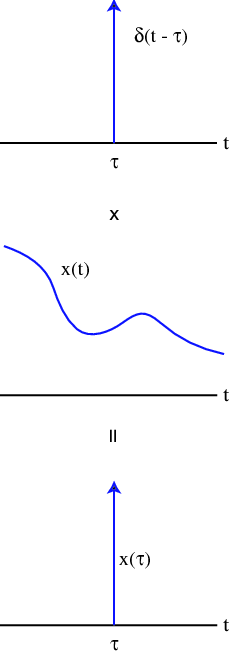| << Chapter < Page | Chapter >> Page > |
The unit impulse is very useful in the analysis of signals, linear systems , and sampling . Consider the plot of a rectangular pulse in [link] . Note the height of the pulse is and the width of the pulse is . So we can write
As we let get small, then the width of the pulse gets successively narrower and its height gets progressively higher. In the limit as approaches zero, we have a pulse which has infinite height, and zero width, yet its area is still one. We define the unit impulse function as

The area under is one, and so we can write
If we multiply the unit impulse by a constant, , its area is now equal to that constant, i.e.
The area of the unit impulse is usually indicated by the number shown next to the arrow as seen in [link] .

Suppose we multiply the signal with a time-shifted unit impulse, . The product is a unit impulse, having an area of . This is illustrated in [link] .

In other words,
Equation [link] is called the sifting property of the unit impulse. As we will see, the sifting property of the unit impulse will be very useful.

Notification Switch
Would you like to follow the 'Signals, systems, and society' conversation and receive update notifications?